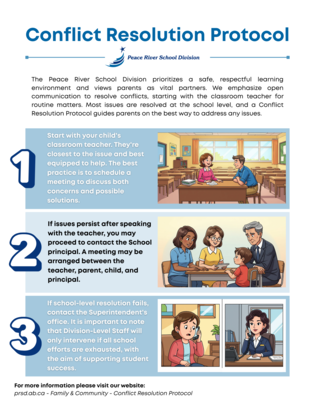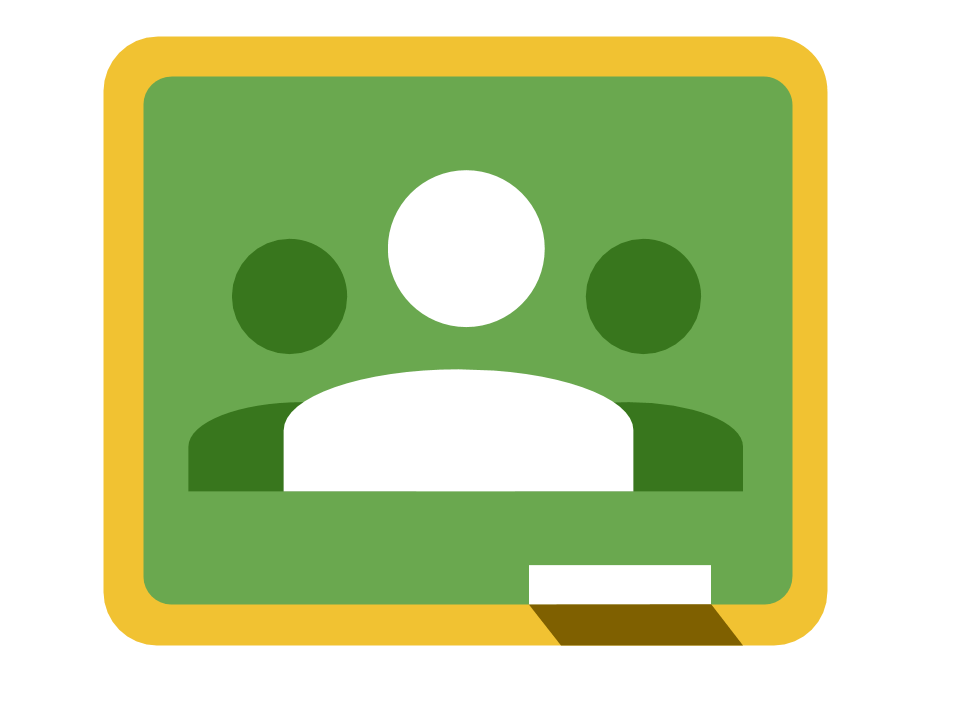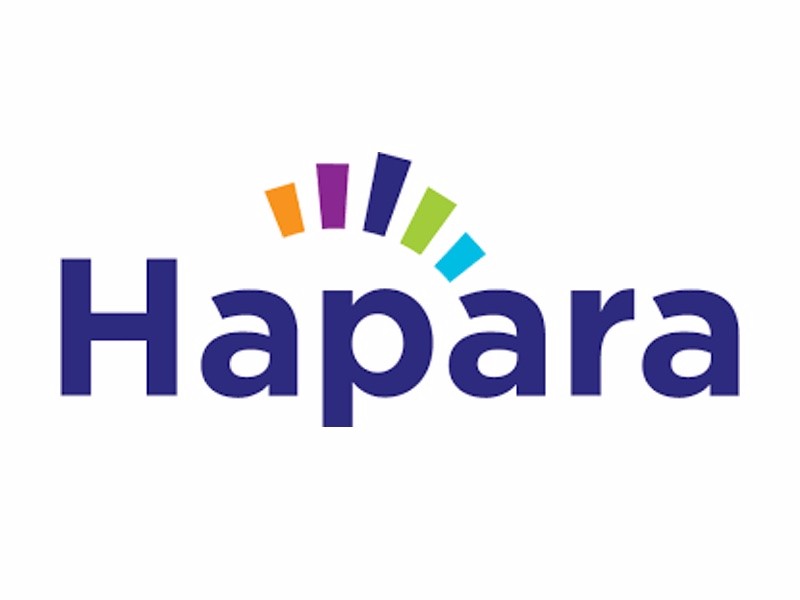Peace River School Division staff are committed to establishing and maintaining a welcoming, safe, and respectful education environment for all students and their parents and/or guardians.
Parents and/or guardians are recognized as extremely important partners in the education process and extensive efforts are therefore expended to foster positive and productive relationships with them.
Addressing Parent Concerns

An important part of creating positive relationships is establishing and maintaining an ongoing open and honest communication process to address any issues or concerns that may arise from time to time throughout a student’s K-12 educational experience. Most parent/student issues are routine in nature and are quickly and effectively addressed through contact and conversation with the classroom teacher. Sometimes; however, an issue may require more time to be resolved and may involve more formalized conversations with the classroom teacher and the school principal or vice-principal.
Regardless of the complexity of the issue, virtually all parent/student issues will be effectively resolved by staff at the school level, and the purpose of this Conflict Resolution Protocol is to provide information for parents regarding the best way to proceed when dealing with an issue/matter involving their child.
Communicating with Staff
In the event that parents have to deal with a school-related issue involving their child, the following steps represent the most effective and efficient way to receive timely support
from the school.
STEP 1 |
The person that can help resolve the issue quickly and appropriately is usually the person closest to the concern. Within the school, the classroom teacher is the person who works most closely with students and best understands their needs. The classroom teacher is also the person who will be most knowledgeable about any concerns or incidents that have occurred, and will, therefore, be the person most likely to help find a resolution to any conflicts Strategies for working with the teacher include:
|
STEP 2 |
If you feel your concern has not been addressed after talking with your child’s teacher and after the implementation of any identified strategies, you can make an appointment to speak with a school administrator, but you should advise the classroom teacher that you are moving in this direction in an effort to expand the problem-solving effort around the matter. *If you do reach out to the school principal or vice-principal, you will be asked if you have already spoken with the teacher about this matter, and if not, you will likely be directed back to making contact with the teacher first. Through the conversation with the school administrator, a meeting may be set up with you and perhaps your child, the classroom teacher, and an administrator to address your concern. It is important to know that the administrator and teacher’s primary goal will be to help resolve the matter to ensure your child’s continued success at school. |
STEP 3 |
In the unlikely event that a resolution is not reached with school administration, you can contact the Superintendent’s office by calling Central Operations, or emailing the executive assistant directly. At this point, your call or email will be redirected to the appropriate person to help resolve the conflict. *Note that Division-Level Staff will only become involved if the parent has followed the Conflict Resolution Protocol, and there is evidence that every effort was made at the school level to have the conflict resolved. |
Central Office Education Team
The PRSD Central Office Team is composed of staff in various departments that help to support the day-to-day operations of schools throughout the division. The function of the Central Office Education Team is to support schools in their focus on student success.
Common topics include:
- Supporting students when attendance might impact achievement
- Supporting safe and consistent practices in schools
- Supporting stakeholders to work with legislated documents that guide education in the province and throughout the division.
School administrators may decide to invite a member of the central office team to a school-based meeting to assist with various aspects of plans to help resolve matters. The principle that guides the actions of all PRSD staff, including the Central Office Education
Team, is well represented in the following question - Is it good for students?
The vast majority of parent/student concerns that arise during the course of the school year can be successfully addressed by staff at the school level through the PRSD Conflict Resolution Protocol. This protocol is guided by what is best for our students.





























